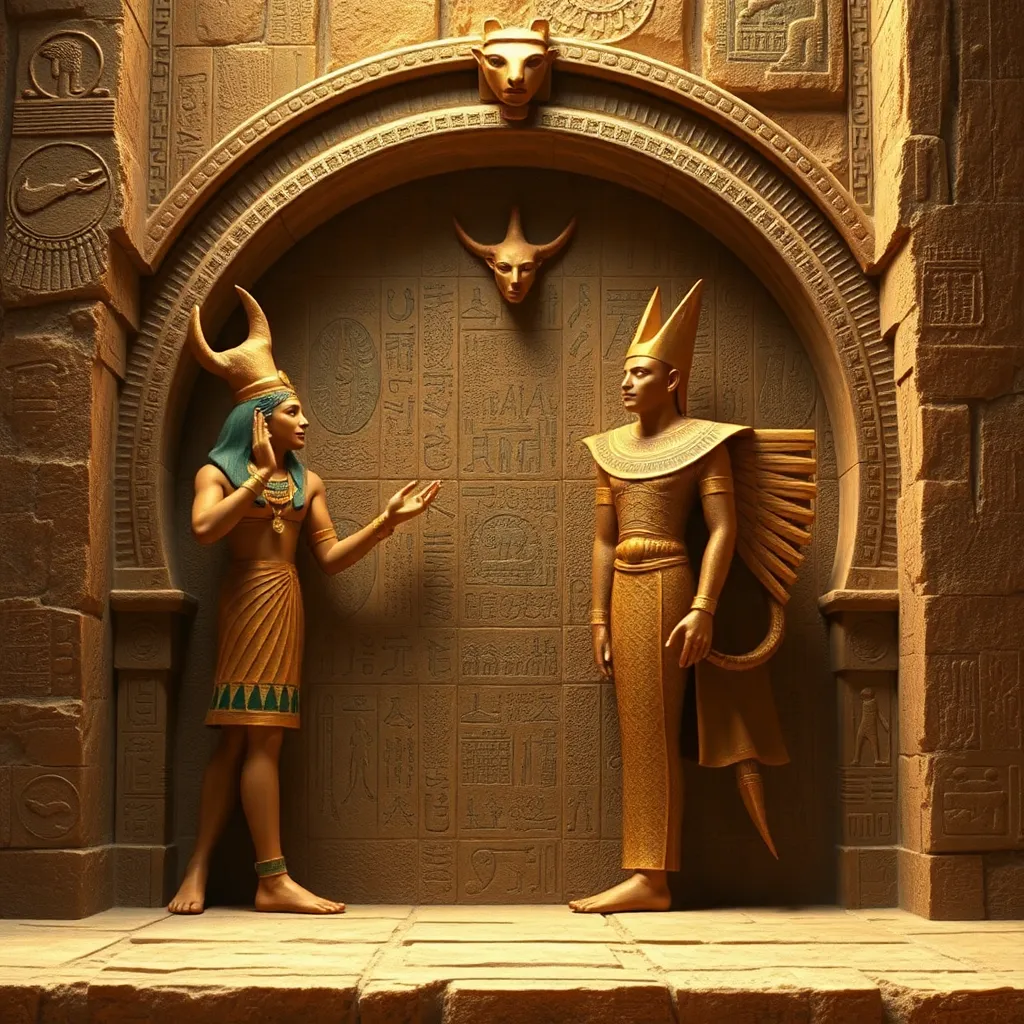The Quest for Immortality: The Ancient Egyptian Belief in the Afterlife and the Cycle of Rebirth
I. Introduction
The concept of immortality in ancient Egyptian culture was deeply intertwined with their beliefs about the afterlife, emphasizing the soul’s journey beyond death. Immortality was not merely an abstract idea but a tangible goal, central to the lives and practices of the ancient Egyptians. The afterlife was perceived as an extension of earthly existence, and its significance permeated every aspect of Egyptian society.
This article aims to explore the multifaceted beliefs surrounding the afterlife and the cycle of rebirth in ancient Egypt, examining historical contexts, deities, funerary practices, and their lasting influence on subsequent cultures.
II. Historical Context of Egyptian Beliefs
The ancient Egyptian civilization flourished along the Nile River, with a timeline spanning over 3,000 years, beginning around 3100 BCE with the unification of Upper and Lower Egypt and lasting until the conquest by Alexander the Great in 332 BCE. The geography of Egypt, particularly the Nile’s annual flooding, played a crucial role in shaping their beliefs about life, death, and rebirth.
Key historical figures, such as Pharaohs and influential priests, shaped the religious landscape. Events like the construction of the pyramids and the establishment of mortuary cults reflected the societal focus on the afterlife and the importance of preparing for it.
III. The Concept of the Afterlife in Ancient Egypt
The afterlife realm, known as Duat, was envisioned as a complex and often perilous journey. It was not merely a paradise but a landscape filled with challenges that the soul had to navigate. The journey of the soul post-death involved several stages, including encounters with divine beings and judgment.
Burial practices were crucial in ensuring a successful transition to the afterlife. Tombs were constructed meticulously, filled with offerings and goods that the deceased would need in the afterlife. The construction of grand monuments like the pyramids symbolized the importance of preparing for eternity.
IV. The Role of Deities in the Afterlife
Several major gods and goddesses were associated with death and rebirth in ancient Egyptian mythology:
- Osiris: The god of the afterlife, resurrection, and fertility, Osiris was central to the belief in rebirth.
- Anubis: The god of mummification and the afterlife, Anubis was responsible for guiding souls and protecting the dead.
- Isis: The goddess of magic and healing, Isis played a critical role in the resurrection of Osiris and the protection of the deceased.
Myths surrounding these deities illustrated the cycle of life and death, emphasizing themes of rebirth and resurrection. The significance of divine judgment was epitomized in the weighing of the heart ceremony, where the heart of the deceased was weighed against the feather of Ma’at, symbolizing truth and justice.
V. Funerary Practices and Their Significance
Mummification was a key funerary practice in ancient Egypt, aimed at preserving the body for the afterlife. This intricate process involved removing internal organs, drying the body with natron, and wrapping it in linen. The belief was that the physical body was necessary for the soul’s existence in the afterlife.
Funerary rituals included offerings of food, drink, and goods, which were thought to sustain the deceased in the afterlife. Tomb art and inscriptions served as a means of communication with the gods and as a record of the deceased’s life, ensuring their memory and legacy endured.
VI. The Cycle of Rebirth and Its Philosophical Implications
The concept of Ma’at, representing truth, balance, and cosmic order, was foundational to Egyptian beliefs about the universe and the afterlife. The cyclical nature of existence was mirrored in the natural world, particularly in the annual flooding of the Nile, which brought fertility to the land and symbolized renewal and rebirth.
The connection between individual and cosmic rebirth was central to their understanding of immortality. The idea that personal resurrection mirrored the natural cycles reinforced the belief that life and death were interconnected and that every ending was also a new beginning.
VII. Lasting Influence of Egyptian Beliefs on Subsequent Cultures
The beliefs of ancient Egypt left a profound impact on later civilizations, particularly in Greco-Roman societies, where ideas of the afterlife and the soul were influenced by Egyptian thought. The myths of Osiris and the concepts of judgment and rebirth found their way into the philosophical and religious frameworks of these cultures.
Modern interpretations of ancient Egyptian beliefs continue to captivate scholars and the general public alike. The fascination with Egyptian mythology is evident in literature, film, and art, which often draw upon themes of immortality and the afterlife.
Contemporary discussions about immortality frequently reference ancient Egyptian beliefs, reflecting humanity’s enduring quest to understand life, death, and what lies beyond.
VIII. Conclusion
In summary, the ancient Egyptians possessed a rich and intricate belief system surrounding the afterlife and immortality, underscored by their cultural practices, deities, and philosophical understandings. Their views on death were not merely about the end of life but about a continuous cycle of existence, emphasizing the importance of preparation and moral living.
The quest for immortality, as evidenced by ancient Egyptian beliefs, is a universal theme in human culture. The legacy of these beliefs endures, inviting reflection on our own understandings of life, death, and the possibilities of what lies beyond.




